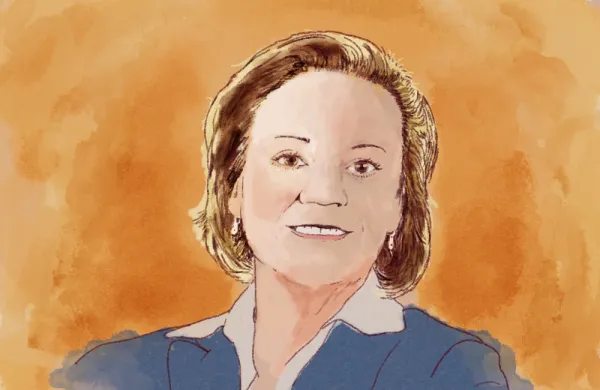It’s not just banks that are failing to thrive in a world where investors are earning almost nothing to hold bonds. The twisted economics of ultralow rates also has asset managers playing defense.
According to Goldman Sachs & Co., this is particularly true in Europe — in Germany bond investors actually paid for the privilege of lending money to the government with the country’s first-ever issuance this summer of a ten-year bond with a negative yield. In a September equity research report called “Switching to an Inorganic Diet,” Goldman analyst Chris Turner and colleagues say they expect near-zero rates to cut into the European asset management industry’s growth, stymie product development, make managers even more sensitive to competition from low-cost index funds and put pressure on prices. The upshot? It will be a busy season for mergers and acquisitions as asset managers seek partners for a way out of the morass.
The report predicts European asset managers will grow about 6 percent annually over the next few years, down significantly from approximately 10 percent per annum between 2009 and 2014. Previous growth primarily came from the appreciation of the assets that managers had on their books. But as asset prices reach historic highs, Goldman sees little room for them to go much further — a big reason behind the M&A boom the researchers are forecasting.
“Given the less favorable starting point, we believe the potential for asset managers to grow assets under management (and ultimately earnings per share) on the back of further asset inflation is more limited than at any time in the last few years,” the researchers write. “As a result, we believe a greater proportion of industry growth over the next few years will be driven by flows.”
One giant deal is already in the works. Earlier this month, active managers Henderson Global Investors, headquartered in London, and Denver-based Janus Capital announced they will merge to create a firm with a combined $320 million in assets under management. Henderson and Janus said the tie-up was driven by increased costs of regulation, fee pressure and competition from passive products.
Goldman analysts also think asset managers will likely consider strategic acquisitions of investment shops that can get them access to the distribution channels of banks, which dominate Europe and Asia. Such deals can significantly increase scale, which can help managers spread rising fixed costs across a larger client base and better position them to take market share from other savings and investment providers, including banks and insurance companies. If asset prices can’t fuel growth, managers will have to gain clients from other industries.
The report adds that asset managers will seek specialists in alternative-credit funds as well as real assets such as infrastructure. With yields on bonds and other traditional fixed-income instruments at these lows, pension funds, endowments and other institutions have been increasingly plowing money into alternative investments like private loans to middle-market companies.
But many traditional managers’ expertise lies in conservative fixed-income funds that now often cost more than they yield. In fact, 43 percent of assets managed by European firms are invested in fixed income, twice as much as in higher-fee equity products. Asset managers that lack specialized credit experience will need to lift out teams or buy investment shops with prowess in structured products and complex capabilities such as lending to smaller companies.
Since the financial crisis, regulators have forced banks to reduce certain risk-taking activities, including lending to less-than-perfectly-rated companies and fixed-income trading. Ironically, some types of asset managers — namely, hedge funds and private equity firms — have benefited, efficiently filling the vacuum left by banks. But traditional asset managers have been unable to adapt as quickly to new opportunities in credit, while they are also suffering from the damage inflicted by low rates on their core investment capabilities. If Goldman’s researchers are right, you can expect to see many more Henderson–Janus-style matchups down the road.






